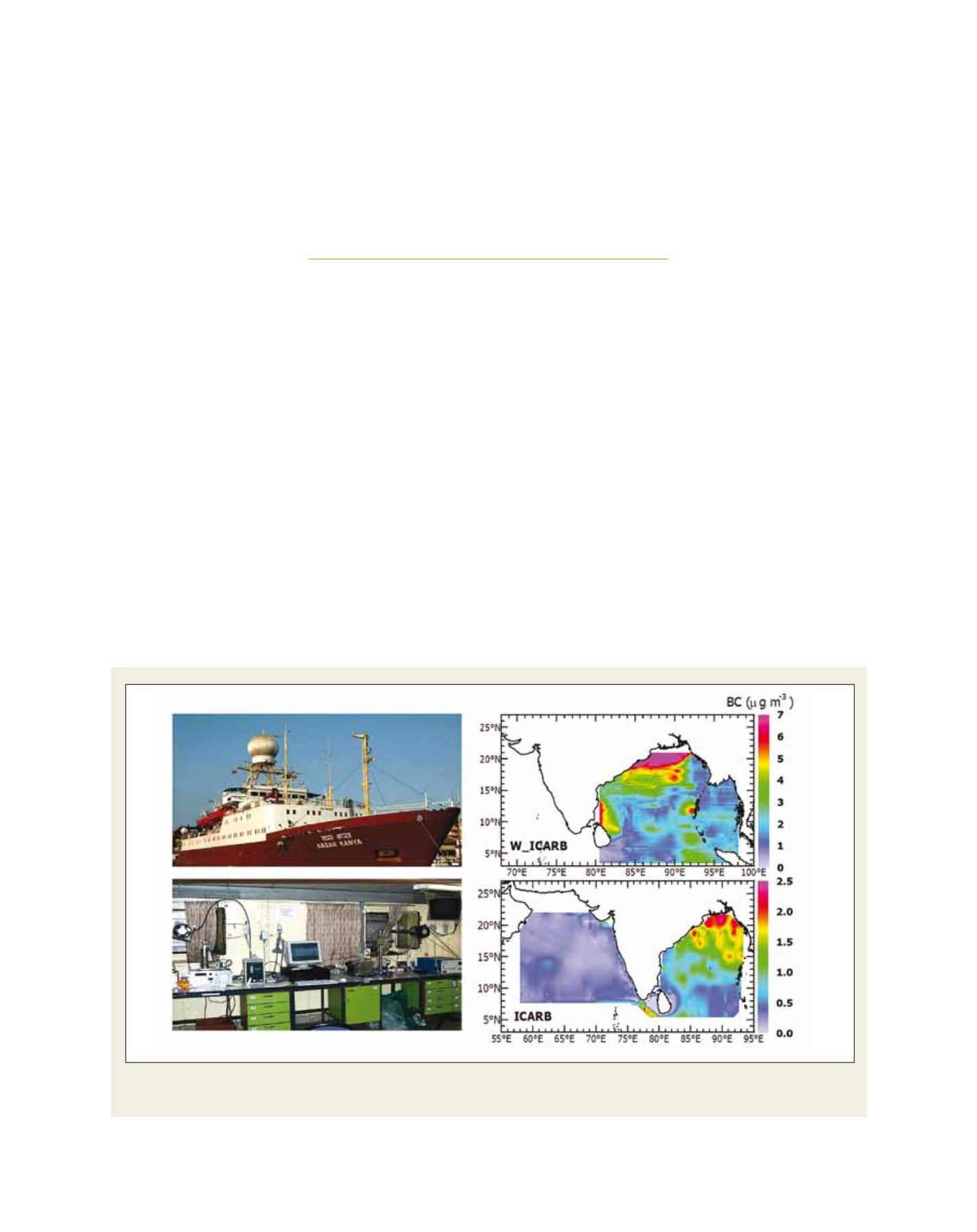

[
] 109
Climate implications of atmospheric
warming due to aerosol black carbon
over the Indian region
S. Suresh Babu and K. Krishna Moorthy, Space Physics Laboratory,
Vikram Sarabhai Space Centre; S.K. Satheesh, Centre for Atmospheric and
Oceanic Sciences and Divecha Centre for Climate Change, Indian Institute of Science; and
P.P. Nageswara Rao, Indian Space Research Organization Headquarters
T
he importance of black carbon (BC) aerosols, a by-prod-
uct of all low-temperature combustion processes, in
significantly altering the radiation balance of the Earth-
Atmosphere system through strong, wide-spectral absorption and
impacting the regional and global climate has been well recog-
nized in the recent years.
Extensive measurements as part of national and international field
campaigns as well as network observatories and global/regional
climate model simulations are being carried out to characterize BC,
its abundance, vertical distribution, contribution to atmospheric
H
ealth
warming, albedo change, glacier/snow melting and
to assess its implications for climate and the environ-
ment. In India these studies have been spearheaded by
the Indian Space Research Organization (ISRO), under
the Aerosol Radiative Forcing over India (ARFI) project
of its Geosphere Biosphere Program (ISRO-GBP) with
active participation from a large number of research and
academic institutions. An appraisal of BC aerosol research
in India suggests that while this topic witnessed signifi-
cant advancement during the past decade, a number of
important climate-relevant issues are still at large.
Source: ARFI
The ORV Sagar Kanya (top left) with its specialist aerosol laboratory (bottom left). The right-hand panels show the spatial distribution of BC over
oceanic regions around India during W_ICARB and ICARB
















